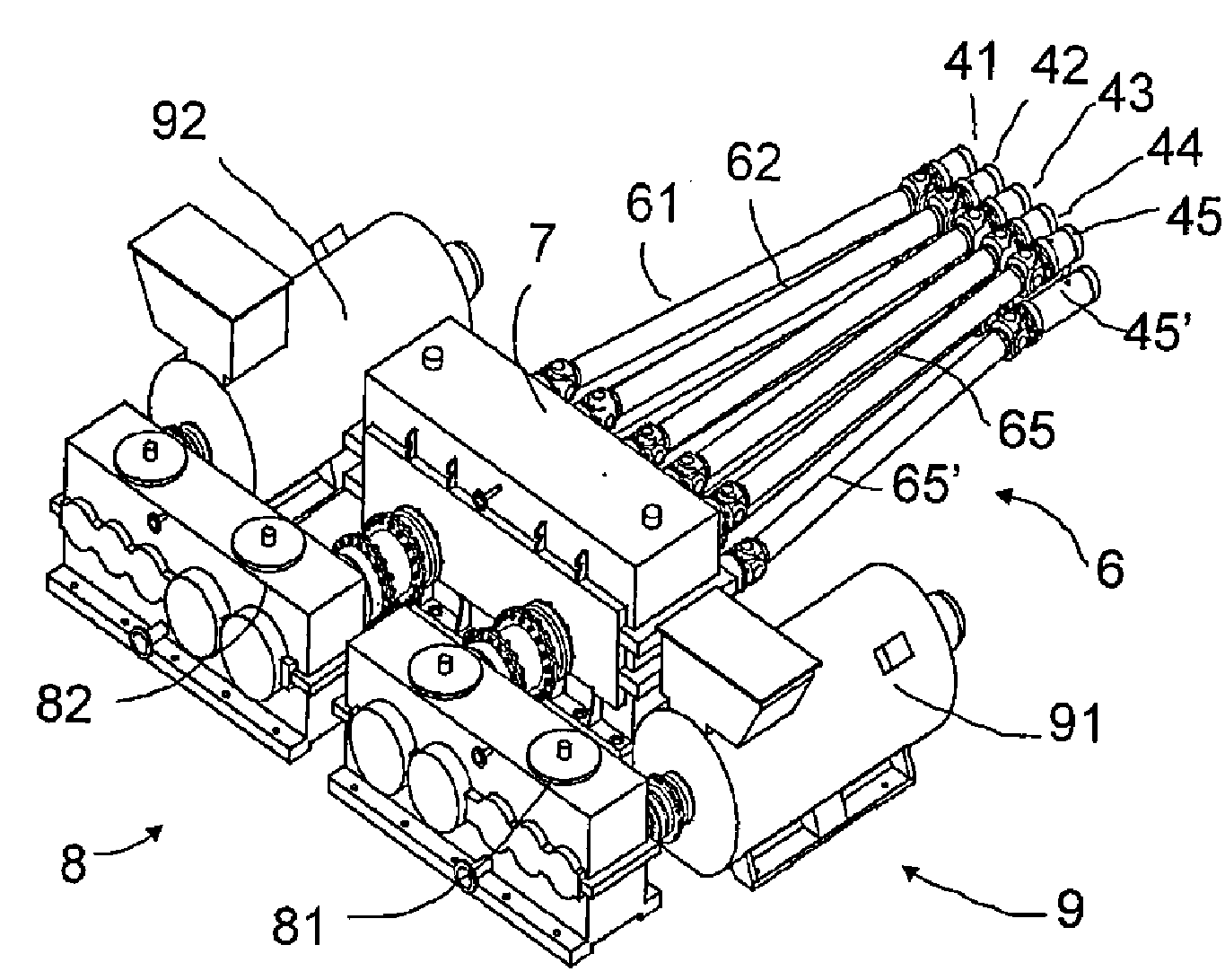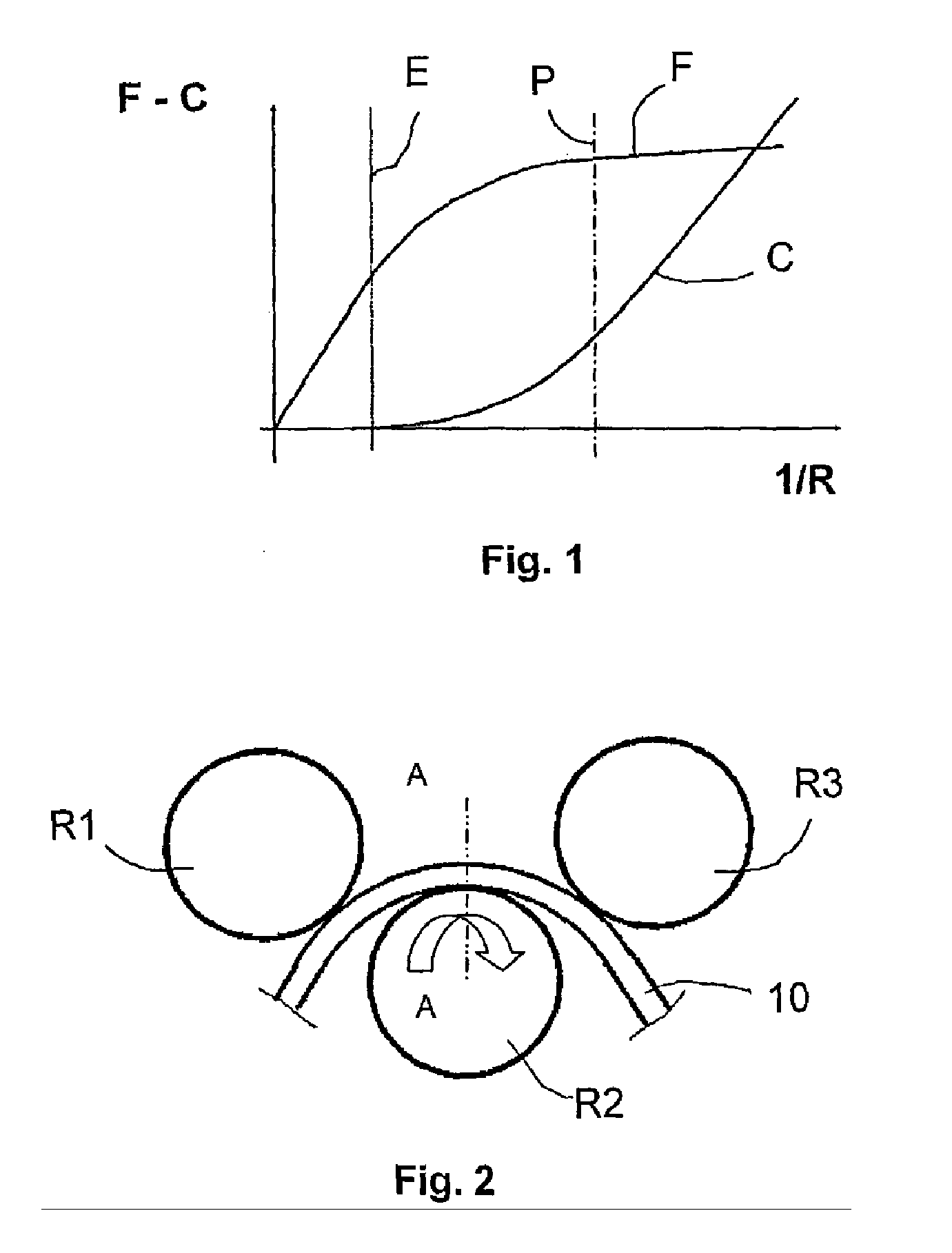Method for levelling a flat product in strip or sheet form in a levelling machine with intermeshed rolls and levelling installation therefore
a technology of intermeshed rolls and levelling installations, which is applied in the direction of metal rolling arrangements, roll mill control devices, manufacturing tools, etc., can solve the problems of inaccurate levelling, inability to direct apply a levelling method such as the one described in u.s. patent no. 4,881,392 and other problems
- Summary
- Abstract
- Description
- Claims
- Application Information
AI Technical Summary
Benefits of technology
Problems solved by technology
Method used
Image
Examples
Embodiment Construction
)
[0041]As shown FIG. 2, a first bend is produced on a product 10 in a levelling machine by a group of three rolls R1, R2 and R3. The product is bent around the central roll R2 which is intermeshed between the end rolls R1 and R3. It assumes a radius of curvature close to the radius of the roll, which depends on the intermesh of the rolls, the mechanical strength of the product and its thickness t. The face in contact with the roll, the intrados, lies under compression and the outer face, the extrados, is under tension as shown FIG. 3. The laws of material strength show that variation is linear in the thickness of the product, for as long as the stress σ is less than the elastic limit. A central region exists without any stress: the neutral axis.
[0042]If bending is greater, the material's elastic limit may be exceeded in regions of maximum stress. In this case, stress is constant and equal to the maximum value in the region of plastic deformation, as is shown FIG. 3bis. It can be obs...
PUM
| Property | Measurement | Unit |
|---|---|---|
| Fraction | aaaaa | aaaaa |
| Thickness | aaaaa | aaaaa |
| Speed | aaaaa | aaaaa |
Abstract
Description
Claims
Application Information
 Login to View More
Login to View More - R&D
- Intellectual Property
- Life Sciences
- Materials
- Tech Scout
- Unparalleled Data Quality
- Higher Quality Content
- 60% Fewer Hallucinations
Browse by: Latest US Patents, China's latest patents, Technical Efficacy Thesaurus, Application Domain, Technology Topic, Popular Technical Reports.
© 2025 PatSnap. All rights reserved.Legal|Privacy policy|Modern Slavery Act Transparency Statement|Sitemap|About US| Contact US: help@patsnap.com



